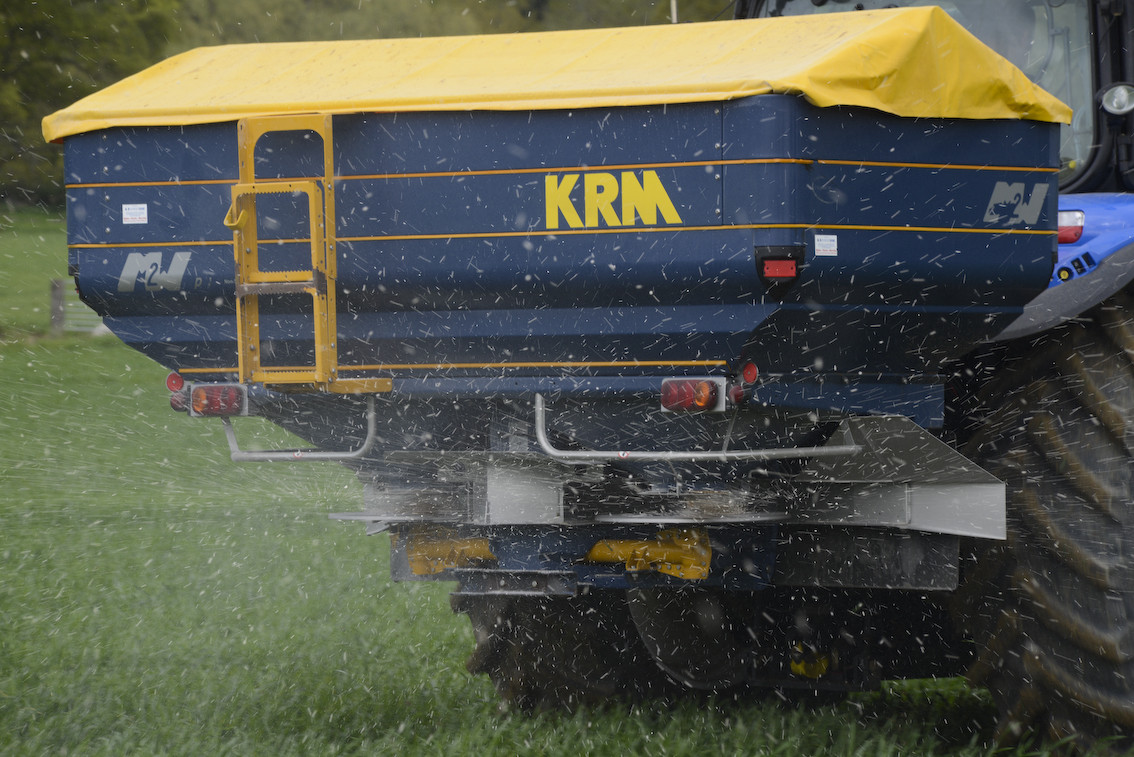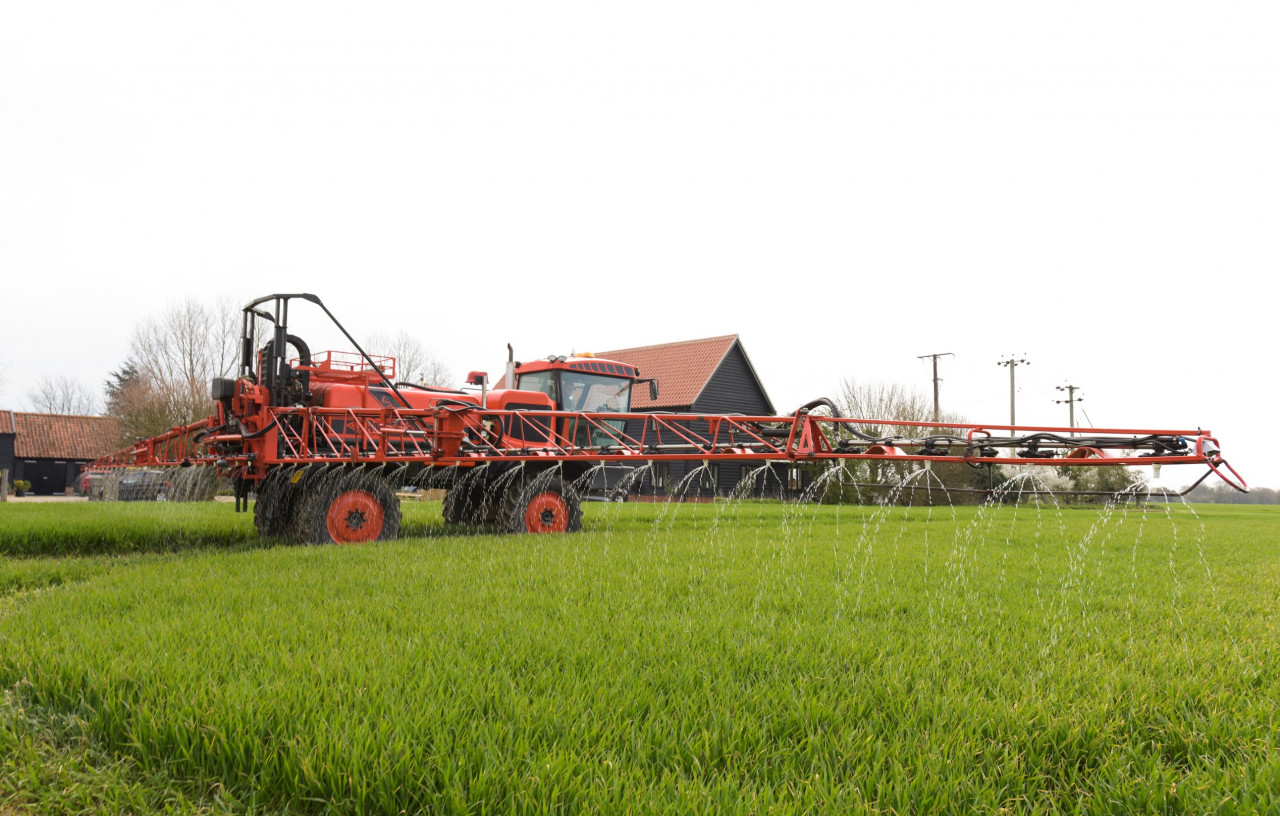Urea stewardship scheme - everything you need to know
DEFRA's consultation on reducing ammonia emissions from urea fertilisers closed in January 2021, but it wasn't until April of this year that the outcomes were clarified.
Now that we can consider all the details, I've outlined some Q&As to offer more context to the new regulation and what it aims to cover.
1. Why is DEFRA concerned about the use of urea fertilisers?
The UK is legally bound to reduce ammonia pollution by 16% by 2030. Currently, agriculture is contributing to 88% of the UK's ammonia emissions and although the industry is certainly doing its very best to improve efficiency and reduce losses, there is no doubt that products such as urea require some specific stewardship.
The recent and significant increase in urea fertiliser sales (solid and UAN) has put more pressure on DEFRA to confirm the implementation of the stewardship scheme, as it is now at greater risk of breaching its legally bound targets.
2. What is the problem with ammonia pollution?
Firstly, it important to acknowledge that this isn't just a UK problem, this is a global issue. Ammonia as a gas only stays in the atmosphere for a few hours once emitted, but problems occur when it mixes with other gases such as nitrogen oxides and sulphur oxides to form particulate matter (PM).
PM has some major health concerns linked to its inhalation and exposure, along with potentially negative environmental impacts if ammonia, after travelling long distances within PM, is deposited within nitrogen-sensitive environments.
Given the 88% figure mentioned above, any changes to farming practices such as rotations, spring/autumn planting and livestock systems/herd sizes can have a dramatic impact – both positively and negatively - to the UK's whole ammonia emissions, so closer management has become increasingly important.
3. So, why is urea a problem?
Importantly, if you're using it in the right conditions, it isn't. However, if used in the wrong conditions, you could be at risk of losing between 10-20% of your applied nitrogen via volatilisation as ammonia (ammonia is 82% nitrogen) within the first 48-72 hours after application, impacting the efficiency of product and the wider environment.
Conditions that contribute to this risk include:
- Dry soils
- Low levels of rainfall
- A high soil pH
- Low crop cover (e.g. spring cereals, maize, sugar beet and potatoes)
- Increased soil and air temperatures.
We believe that as farmers you should be able to choose when you apply your fertiliser products based on your known soil conditions, previous or forecast weather and your crop requirement. However, we appreciate that there needs to be clarity on dates, not too dissimilar to the approach given to nitrate vulnerable zones (NVZ) regulations and their justification.
4. What has been confirmed so far?
DEFRA had confirmed a non-regulatory approach initially, but it's since become clear that if it doesn't see the level of uptake expected from the sales data supplied by the industry, it will have to formally regulate to reduce ammonia emissions from urea-based fertilisers.
The enforcement of the stewardship scheme had already been delayed a year due to the extremely high fertiliser prices seen over the last 18 months.However, pressure from the significant increase in urea purchased means enforcement will now start from 1st April 2024.
This increase in urea demand has been due to the low availability of ammonium nitrate (AN) sources and the potential for a significant reduction in cost per kilogram of nitrogen. This is of course all well and good - as long as we're not losing 10-20% of that applied product.
5. What are the details of the stewardship scheme?
It's important to note that although the Government's ammonia reduction targets are based on the whole of the UK, the following rules only apply to England. We haven't yet seen confirmation of the approach in Scotland, Wales and Northern Ireland.
England rules outline that:
- Regulation applies to any fertiliser that contains 1% or greater of urea nitrogen
- Untreated solid urea/liquid UAN fertiliser can be applied between 15th January to 31st March each year
- Applications of solid urea/liquid UAN fertiliser from the 1st April will need the inclusion of a urease inhibitor
- Foliar urea applications do not require the inclusion of a urease inhibitor
- Untreated liquid UAN fertiliser can be applied after 1st April if agronomic justification is provided by a FACTS qualified advisor that demonstrates ammonia losses will be at or below the level of including a urease inhibitor.
These rules will be enforced from the spring on 1st April 2024 and then annually every April thereafter.
6. I want to continue to use urea, what do I need to do?
You can continue to purchase untreated urea as you would in any other year, but you need to ensure your fertiliser purchase takes into account the urea volume you're likely to apply after 1st April of each spring (2024 onwards).This tonnage of urea would need to include a treatment with a urease inhibitor, such as Sustain.
7. Do I have any other options?
AN-based products are outside these rules, so using these would obviously remove the restriction of application periods or the requirement of urease inhibitors. There are numerous AN-based options available to satisfy this requirement, but as with any fertiliser you should consider product quality, consistency and availability.
With this in mind, you might consider products such as CF Nitram 34.5% and YaraBela EXTRAN 33.5% N. In addition, we encourage growers and advisors to continue to look at the cost per kilogram of nitrogen and total programme costs for all available options alongside their individual merits for each farm business.
8. If I use liquid fertiliser, what do I need to do?
As liquid fertiliser can be up to 50% urea, it also requires the inclusion of a urease inhibitor from 1st April of each spring (2024 onwards). This is considerably easier to manage as the urease inhibitors, such as BASF Limus Perform, can be added to the spray tank as and when required. This would of course be needed for all applications after 1st April but it would potentially be the case if we experienced particularly warm or dry conditions before that date too. The use rate is extremely low, at or below 1 litre per 1,000 litres of fertiliser, and there is a specific inclusion rate for each liquid grade based on the exact urea component it contains.
Reassuringly, products such as Sustain or BASF Limus Perform are not new technologies with unknown results - they have been proven to be effective products both on farm and in trials within the UK and the wider global market for numerous seasons now.
Tip: Be cautious of new products entering the market with no proven or registered status as a urease inhibitor. As we are now mandated to use these technologies, it is critical product with proven efficacy is used to reduce ammonia emissions and increase crop performance and efficiency on farm.
In fact, users have seen up to a 98% reduction in ammonia emissions and an increase of over 7% in Nitrogen Use Efficiency (NUE).This improvement in NUE in particular has delivered an average yield increase of 0.23t/ha in a series of ADAS agronomic trials on farm, following the inclusion of Limus Perform in the later liquid fertiliser applications.
There have been changes in buyer preferences on nitrogen-based products over the last 12-24 months due to either restrictions on product availability or costs.This means there will be new urea users in the market, that may either continue to buy urea or have carryover stock. Either way, an awareness of this new legislation is important and its implications for product use must be considered.
Finally, I fully appreciate that in almost all scenarios in life, no one particularly likes change. This mandated inclusion of urease inhibitors for applications after 1st April will undoubtedly raise questions for many about best approach and implementation, but if you're careful to take sound advice there are some important benefits to be had.
Ultimately, this move is a vital one if we are to help reduce impacts from farm inputs on the wider environment, but it's also paramount to improving the efficiency of our fertiliser programmes through reduced nitrogen losses. In turn this should deliver improved crop performance, helping to contribute to more resilient farming systems overall.
For more advice about the upcoming regulation and what it may mean for your farm business, you can speak to your local Frontier representative or contact the nutrition team here.
Meet our experts at a Frontier 3D Thinking open day
Across the summer we're hosting our series of UK-wide 3D Thinking open days, giving you the opportunity to learn more about the innovation and research underway at our trial sites. The events are also a great opportunity to meet our nutrition specialists who will be on hand to talk more about the upcoming regulations and solutions available.
To find your local event and register to attend, visit our website.
As a subscriber, you’ll receive email alerts each time a new blog is published so you can always stay updated with the latest advice and insights from our experts







Comments